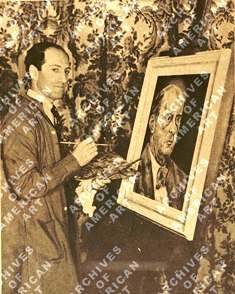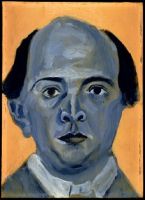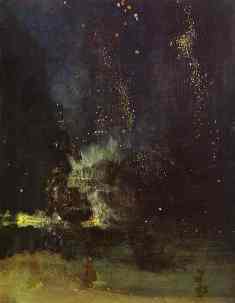
Arnold and George: Colorful Relationship
Blue is not the only color that will be heard (and seen) on
the Cincinnati Chamber Orchestra’s final concert of the season June 6.

In a multi-media program designed to illustrate the connection between music and visual art -- and the relationship between two colorful people -- projections of artworks will accompany the performance. There are two chances to experience it: 2 p.m. in Corbett Auditorium at the University of Cincinnati College-Conservatory of Music and 7:30 p.m. at Anderson Center in Anderson Township.
Guest artist will be pianist Michael Chertock in George Gershwin’s “Rhapsody in Blue,” Three Preludes and excerpts from “Grand Fantasy on Airs from ‘Porgy and Bess," transcribed for solo piano by Earl Wild.
Setting off all that blue music will be Arnold Schoenberg’s multi-colored “Verklärte Nacht” (“Transfigured Night”). The 2 p.m. matinee will include Schoenberg’s Five Pieces for Orchestra, too. CCO music director Mischa Santora will conduct.
“The whole concept for the concert was to combine two very unlikely characters, Schoenberg and Gershwin,” Santora said. “I’ve been fantasizing about this for some time. Of course, their music doesn’t sound anything alike. The two actually became friends in California (where both composers moved). They became tennis partners and very good colleagues.
“Yeah, it’s weird,” Santora admitted. “Who would have thought? Even when you look at their lifestyles, Gershwin was extroverted, fun-loving, charming, good looking, unbelievably successful and unbelievably well paid. He was kind of a party animal and he was a celebrity.
“Schoenberg was pretty much in every category the complete opposite, but they had tremendous respect for each other as composers.”
More than that, they shared a hobby, painting.

“Schoenberg was an avid painter throughout his career. Gershwin picked it up later. They actually painted each other.”
Santora’s idea is to compare Schoenberg and Gershwin and to consider the impact of color on music. “Schoenberg wrote theoretical treatises on synesthesia, the association of colors with certain notes and keys, the color scheme of a piece. He and Kandinsky back in 1910, 11, 12, before World War I broke out, collaborated and talked about this. It’s something that occupied Schoenberg’s mind for a long time, and he composed like that.”
As for Gershwin, it appears that “Rhapsody in Blue” has more
than just musical connotations.
Originally, Gershwin had intended to call it “American Rhapsody," then
his brother Ira took him to a gallery in New York where he saw paintings by
James McNeill Whistler. Many of them
bore musical titles, like “Nocturne in Black and Gold” or “Harmony in Grey and
Green.” (The famous “Whistler’s Mother” is
really entitled “Arrangement in Grey and Black.”)

“Ira said, ‘Just call it “Rhapsody in Blue.” Why not?'"
For the concerts, there will be projections of both composer’s paintings, plus paintings that inspired Schoenberg, like Kandinsky. “We want to project some of Gustav Klimt’s painting, particularly during the third movement of the Five Pieces (entitled “Farben” or “Colors”).”
Gershwin’s paintings are hard to track down, said Santora. “They were locked away at the Gershwin estate, and nobody has access to them. We’re working on this through several channels.”
In general, pairing the composer who helped jazz “cross over” into classical music and the creator of serial, so-called “12-tone” music sounds like a difficult assignment. However, for Santora, who is finally seeing his fantasy come true, it’s a golden opportunity.
“Gershwin’s music doesn’t need a lot of explanation, but I think Schoenberg’s does. Having the music together with some of his paintings may help people understand what was important to him in music and why he wrote the way he did.”
Tickets for the concerts are $15 and $25 for CCM, $20 for Anderson. One child (under 18) will be admitted free with each paying adult at Anderson Center. Call (513) 723-1182, ext.102, or visit the CCO web site at www.ccocincinnati.org